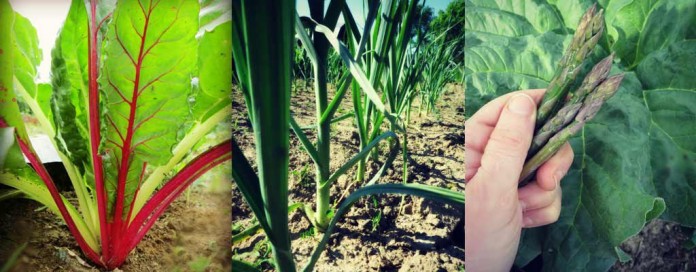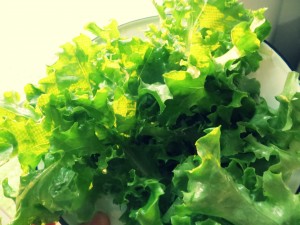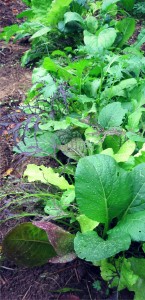Gardeners can grow more food with less space, effort and expense by planting vegetables that can be harvested and regrown multiple times each season. Whether you have limited planting space or limited time to sow second and third crops, grow-again vegetables produce higher yields with less work.
Re-growing vegetables from established roots also makes economic sense because there is no need to purchase additional seeds, fertilizers or mulch. Since you will not re-till the garden bed, obtaining multiple harvests off a single planting is a sustainable way to help keep soil healthy.
Cut n’ grow!
Loose leaf lettuce matures in 30-50 days. Plant very early in spring for three cuttings before bolt. Leave 1 to 1 ½ inch at lettuce base when harvesting.
Garlic requires a long growing period. Cloves planted in fall produce won’t reach maturity until late the following summer. Fortunately you can enjoy the garlic’s green leaves while you wait!
Beets, carrots, turnips and other root vegetable plants produce edible greens that are often discarded when the root is harvested. You can cut and enjoy these edible greens twice, once during root development and again at root harvest. Beet greens taste similar to Swiss chard. Carrot greens make great salad garnishes. Turnip greens taste delicious sautéed with bacon.
Onion greens can be cut and used like chives while bulbs develop. Harvest only the green tops. Leave 1 to 2 inches at base to regrow for a continuous supply all season long.
Leeks have a mild onion flavor. First harvest, cut only the green tops, leaving the lower white portion in the soil to regrow. Pull up the whole leek at second harvest.
Spinach is a cool season crop. Plant very early in spring for two harvests before summer heat sets in.
Swiss chard has a texture and taste similar to that of spinach. Sow very early in spring to produce two harvests before summer.
Asian greens like bok choy, mizuna and tatsoi can be cut once before they fully mature to produce a “baby” size greens. Leave 1 to 1 ½ inch at base and regrow to full maturity.
Herbs
You can cut and grow mint, basil, sage and many other herbs all season long. In fall, transplant herbs into containers and move to a sunny windowsill. Continue to cut and grow herbs indoors all winter long.
Asparagus takes two years to establish, but you’ll get a good crop by the second year and years that follow with no effort or investment. Established asparagus patches produce a continuous crop from May through June annually.
Rhubarb is another cut and grow perennial. Like asparagus, rhubarb needs one year undisturbed to develop a strong root system. When harvesting leave a few stalks on each plant to ensure future production.
Kale, collard and other greens can be planted very early in spring, and harvested and regrown several times throughout the season. Production will slow down in the heat of summer, but pick up again when weather cools in fall.
STAY INFORMED. SIGN UP!
Up-to-date agriculture news in your inbox!















